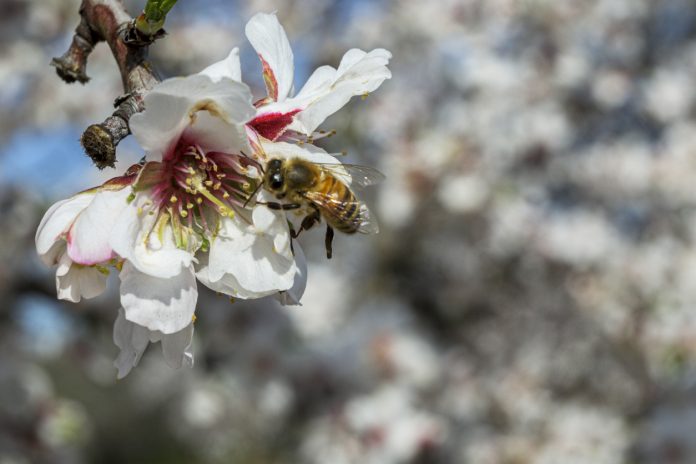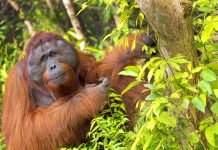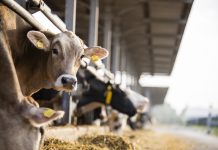Josette Lewis, Chief Scientific Officer at the Almond Board of California, explores the vital connection between the protection of honeybees and other pollinators, plus the future of agriculture in this insightful analysis
Every late winter and early spring, a remarkable partnership unfolds across California’s Central Valley. As almond blossoms cover the landscape, honeybees arrive from across the U.S. These bees are not just essential to almond production; they are emblematic of a truth that sits at the heart of much of global agriculture: the future of food depends on the health and protection of pollinators.
Pollinators: The beating heart of agriculture
It’s a well-known fact that pollinators are responsible for one out of every three bites of food we eat. (1) Their work enables the production of fruits, vegetables, nuts, and seeds, supporting not only food security and nutritious diets but also biodiversity and rural economies. When it comes to pollinators, honeybees are perhaps some of the hardest-working. In the U.S. alone, as many as 90 different crops are pollinated by honeybees each year. (2)
Honeybees are not native to North America and were brought over by European colonists to pollinate fruit trees. In California, the global leader in almond production, every nut represents the work of a honeybee cross-pollinating two almond varieties in each orchard. Between January and March each year, beekeepers bring honeybee colonies to almond orchards. The almond blossoms reward bees with high-quality pollen and nectar, and reward beekeepers with stronger hives and much-needed income. It is a partnership between the bees and trees and the beekeeper and almond growers.
The challenges facing pollinators
Despite their importance, honeybees and other pollinators have faced a variety of factors globally that have contributed to their declining health. These include activities associated with both beekeeping and crop production. More recently, USDA-ARS research (3) analysing early 2025 honeybee losses pinpointed high levels of viral infections transmitted by treatment-resistant Varroa mites as a primary driver of colony collapse.
These challenges are not just an issue for beekeepers; they impact all of agriculture. The loss of pollinator health threatens crop yields, farmers’ incomes, and the stability of our food system. Simply put, the health of pollinators is inseparable from the health of agriculture itself.
Building solutions together
California almond growers recognise that the protection of pollinators is not an option; it is fundamental to their futures and that of California’s valued environment. Because of this, since 1995, growers have been investing in research, practices, and partnerships focused on honeybees and native pollinators alike, making our industry a leader in science-driven pollinator stewardship.
So, what exactly are we investing in, and what are the learnings that can be applied to agriculture more broadly?
1. Science-based best practices
It all starts with making sure we keep honeybees safe for the 4-6 weeks that they are in almond orchards. Introduced in 2014, our Honey Bee Best Management Practices (BMPs), developed with input from farmers, beekeepers, scientists, and regulators, provides comprehensive guidance on everything from strategies to minimise agricultural sprays and keep honeybees safe if crop protection is needed, to hive placement and orchard management. Importantly, we have not shied away from research that challenges us to do better. For example, the adoption of the BMPs has contributed to a nearly 70% reduction in dormant pesticide use in Californian almond orchards since they were implemented. (4)
2. Supporting pollinator nutrition and habitat
Just like us, pollinators need a diverse diet to meet their nutritional needs. That’s why we encourage almond farmers to plant cover crops and hedgerows, providing additional food for pollinators beyond almond blossoms throughout their stay. University of California research (5) shows that honeybee hives leaving almond orchards with blooming cover crops are healthier, with stronger populations and better resilience against disease.
Farmers have responded, with almost 25% of California almond growers planting pollinator cover crops, with continued increases each year. And with the support of initiatives such as Project Apis m.’s “Seeds for Bees” programme, California almond farmers have added pollinator habitat to over 130,000 acres of almond orchards. (6)
Today, more than 200,000 acres of almond farms are registered as Bee Friendly Farms, adding permanent habitat outside of orchards for native pollinators. In the form of hedgerows and floral strips, this habitat provides both native plants and nesting sites for native bees and butterflies.
3. Partnership and innovation
Building on the momentum with almond farmers, in 2021, the industry co-founded the California Pollinator Coalition to bring other crop farmers and ranchers together with nonprofit, state, and federal government conservationists to expand pollinator habitat statewide. Together, we are challenging how we farm to deliver high-quality food together with environmental services.
The story of agriculture and honeybees is not just one of interdependence, but of a shared future. As we look to create a healthy environment for all pollinators, it’s clear that working lands – whether farms, orchards, or ranches – need to be part of the solution. Ultimately, it is the practices we adopt today that will determine the resilience of our food system tomorrow.
Further information
References
- https://www.usda.gov/about-usda/general-information/initiatives-andhighlighted-programs/peoples-garden/importance-pollinators
- https://www.almonds.com/why-almonds/growing-good/honey-bees
- https://www.ars.usda.gov/news-events/news/research-news/2025/usda-researchers-find-viruses-from-miticide-resistant-parasitic-mites-arecause-of-recent-honey-bee-colony-collapses/
- Environmental Toxicology and Chemistry, Volume 41, Issue 4, 1 April 2022,
Pages 1042–1053, https://doi.org/10.1002/etc.5297 - https://nationalnutgrower.com/article/healthy-orchards/#:~:text=Research%20at%20the%20University%20of,blossoms%20provide%20to%20those%20hives.%E2%80%9D
- https://www.almonds.com/why-almonds/growing-good/honey-bees











